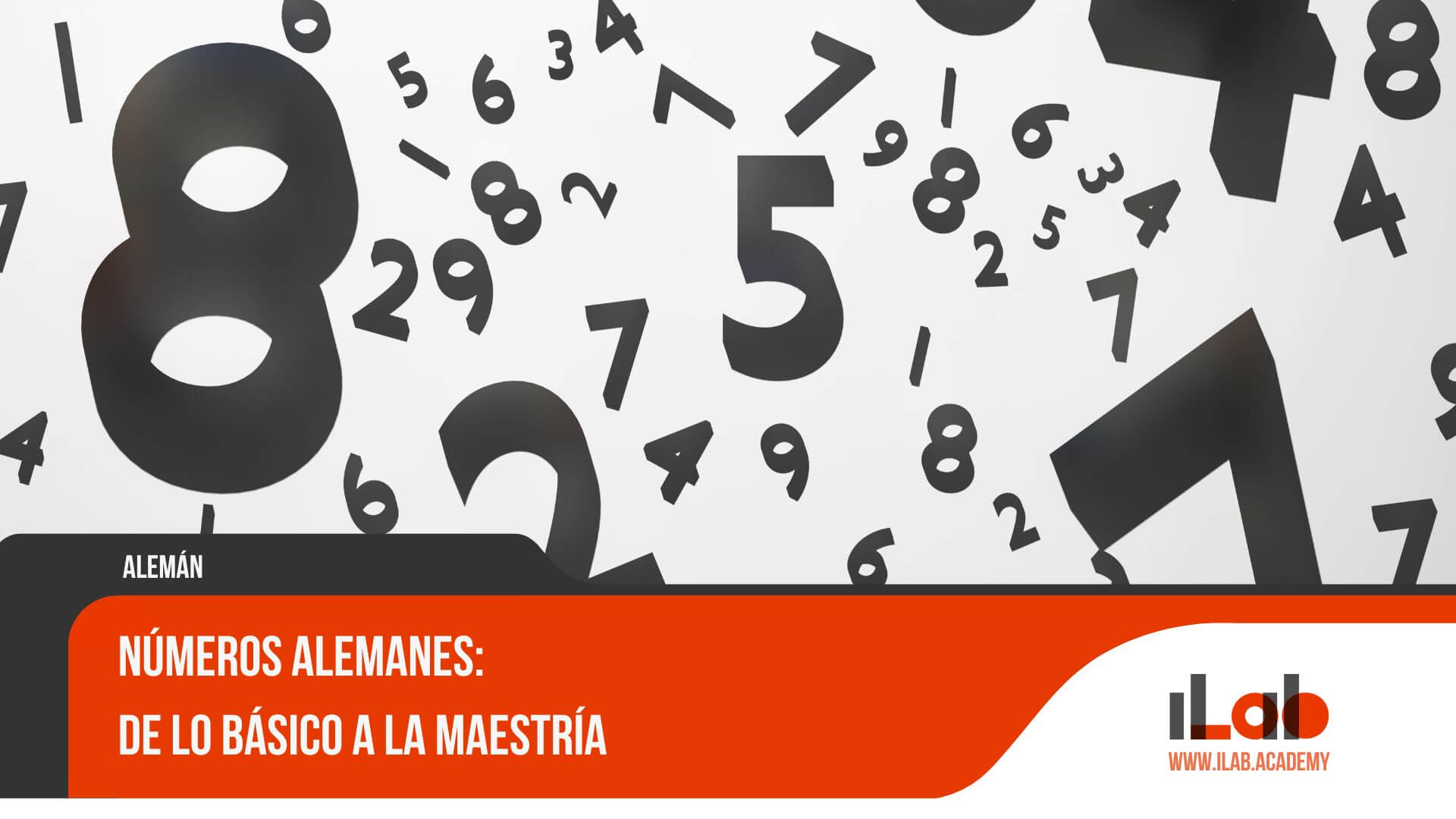Table of contents
Mastering German numbers is fundamental for fluency in daily activities like shopping and telling time. Start with 0-10, paying attention to their unique pronunciations. Advance to 11-20, noting that 11 and 12 are unique while 13-19 combine base numbers with ‘zehn’. For numbers 21-99, practice combining units with tens. Learn ordinal numbers and their suffixes to express order and dates. Pronunciation is key—focus on vowel sounds and the ‘ch’ in compound numbers. German numbers are also culturally significant, influencing many aspects of life. With practice and understanding, you will confidently navigate German numerical nuances. Discover more next.
Basic German Numbers
Understanding the basic German numbers is essential as it forms the foundation for more complex numerical concepts. We will start by exploring the numbers from 0 to 10, followed by 11 to 20, and then examine how tens and units are structured in German. Are you ready to enhance your German language skills with these fundamental building blocks?
Numbers 0-10
The foundation of learning German numbers begins with mastering the basics from 0 to 10. This initial step is vital as it sets the stage for understanding more complex numerical concepts. Each number in German has a distinct pronunciation and spelling, which requires careful attention to detail.
Here’s a helpful table to illustrate the basic German numbers:
| English | German | Pronunciation |
|---|---|---|
| 0 | Null | [nʊl] |
| 1 | Eins | [aɪ̯ns] |
| 2 | Zwei | [tsvaɪ̯] |
| 3 | Drei | [dʁaɪ̯] |
| 4 | Vier | [fiːɐ̯] |
| 5 | Fünf | [fʏnf] |
| 6 | Sechs | [zɛks] |
| 7 | Sieben | [ˈziːbn̩] |
| 8 | Acht | [aχt] |
| 9 | Neun | [nɔʏ̯n] |
| 10 | Zehn | [tseːn] |
Understanding these basic numbers is not only essential for counting but also for various daily activities such as telling time, shopping, and handling conversations. Practice pronouncing each number until you feel confident. Can you count from 0 to 10 without hesitation? Take the time to repeat these numbers aloud, and soon they will become second nature. Remember, a solid grasp of these foundational numbers will greatly enhance your overall proficiency in the German language.
Numbers 11-20
Building upon the foundational numbers from 0 to 10, learning the German numbers from 11 to 20 is the next essential step in mastering basic numerical skills. This range of numbers introduces slightly more complexity but follows logical patterns that are easy to grasp with practice.
The German numbers from 11 to 20 are as follows: elf (11), zwölf (12), dreizehn (13), vierzehn (14), fünfzehn (15), sechzehn (16), siebzehn (17), achtzehn (18), neunzehn (19), and zwanzig (20). Evidently, the numbers 11 and 12 are unique and must be memorized as they do not follow a specific pattern. However, from 13 to 19, the numbers are constructed by combining the base number with ‘zehn’ (ten), indicating their position in the teens.
For example, ‘dreizehn’ (13) combines ‘drei’ (three) and ‘zehn’ (ten). Similarly, ‘vierzehn’ (14) merges ‘vier’ (four) and ‘zehn.’ Note the slight variations in ‘sechzehn’ (16) and ‘siebzehn’ (17), where ‘sechs’ and ‘sieben’ are shortened for ease of pronunciation. Finally, ‘zwanzig’ (20) marks the shift to the next numerical tier.
Tens and Units
After mastering numbers 11 to 20, the next step involves learning the structure of German numbers in the tens and units, which follow a logical and consistent pattern. In German, numbers from 21 to 99 are formed by combining the units (1-9) with the tens (20, 30, 40, etc.). The unique aspect here is that the unit is stated first, followed by the word ‘und’ (meaning ‘and’), and then the ten. For example, 21 is ‘einundzwanzig’ (one and twenty), and 34 is ‘vierunddreißig’ (four and thirty).
This pattern continues up to 99. It’s vital to note that the tens follow their own distinct names: 20 is ‘zwanzig,’ 30 is ‘dreißig,’ 40 is ‘vierzig,’ 50 is ‘fünfzig,’ 60 is ‘sechzig,’ 70 is ‘siebzig,’ 80 is ‘achtzig,’ and 90 is ‘neunzig.’ Understanding these basic building blocks is necessary for fluency.
Practice this structure by forming different numbers. Can you say 47 in German? It’s ‘siebenundvierzig.’ With consistent practice, you’ll find these patterns becoming second nature. Embrace the process, and soon you’ll navigate German numbers with confidence and ease. Keep going—every step brings you closer to mastery!
Larger German Numbers
As you progress beyond the basics, mastering larger German numbers becomes essential for effective communication. Numbers from 21 to 100 follow specific patterns that simplify learning, while understanding hundreds and thousands will enable you to discuss dates, prices, and quantities with ease. Are you ready to expand your numerical vocabulary and gain confidence in using larger German numbers?
Numbers 21-100
In German, numbers from 21 to 100 are formed by combining the unit and the tens place, often in a reversed order compared to English. This structure may initially seem confusing, but with practice, it becomes intuitive. For instance, the number 21 is “einundzwanzig,” which directly translates to “one and twenty.” Similarly, 45 is “fünfundvierzig,” meaning “five and forty.” This pattern continues consistently up to 99.
To illustrate this pattern more clearly, consider the following examples:
| English Number | German Number |
|---|---|
| 21 | einundzwanzig |
| 34 | vierunddreißig |
| 57 | siebenundfünfzig |
| 68 | achtundsechzig |
| 99 | neunundneunzig |
Notice how the unit is stated first, followed by “und,” and then the tens. This method emphasizes the German language’s logical structure, making it easier to predict the formation of other numbers within this range.
When learning these numbers, practice is key. Write them out, say them aloud, and use them in sentences. Ask yourself: How would you say 73 in German? “Dreiundsiebzig!” The more you engage with these numbers, the more natural they will become in your daily communication. Embrace this challenge, and soon, counting in German will be second nature.
Hundreds, Thousands, and Beyond
Mastering larger German numbers involves understanding the patterns for counting in hundreds, thousands, and even millions. In German, the construction of these numbers is systematic, making them easier to grasp once you know the building blocks. For instance, ‘hundert’ means one hundred, and by adding the digits before it, you can form numbers like ‘zweihundert‘ (two hundred) or ‘dreihundert‘ (three hundred).
When you move into the thousands, it’s similar: ‘tausend’ signifies one thousand. Combining smaller numbers with ‘tausend’ forms larger values, such as ‘zweitausend‘ (two thousand) and ‘dreitausend‘ (three thousand). The pattern continues into the tens of thousands, like ‘zehntausend‘ (ten thousand).
Going beyond, ‘eine Million‘ translates to one million. German maintains consistency in higher numbers, which aids in learning and retention. For instance, ‘zwei Millionen’ (two million) follows the same principle. Remember, in German, large numbers are often written as one word, such as ‘einhunderteinundzwanzigtausend’ for 121,000.
Understanding these patterns and practicing their use can significantly boost your confidence and fluency in German. So, immerse yourself in exercises and real-life applications to master these larger numbers!
Ordinal Numbers in German
Understanding ordinal numbers in German is essential for expressing order, ranking, and dates accurately. Ordinal numbers, such as “first” (erste) and “second” (zweite), follow specific rules and patterns that differ slightly from cardinal numbers. How do these ordinal numbers impact daily conversations and formal settings in German-speaking environments?
Basics of Ordinal Numbers
Ordinal numbers in German, which indicate the position or rank of something in a sequential order, are formed by adding specific suffixes to the cardinal numbers. Understanding these rules is vital for achieving fluency in both spoken and written German. For numbers one through nineteen, the suffix ‘-te’ is typically added to the base number. From twenty onward, the suffix ‘-ste’ is used.
For instance, ‘first’ is ‘erste,’ ‘second’ is ‘zweite,’ and ‘twentieth’ is ‘zwanzigste.’ These patterns are consistent and predictable, simplifying their use once the basic rules are understood.
- First (erste): The suffix ‘-te’ is added to the root ‘erst’ to form ‘erste.’
- Second (zweite): Following the same pattern, ‘zweite’ is derived from ‘zwei’ (two).
- Twentieth (zwanzigste): The suffix ‘-ste’ is used for numbers twenty and beyond.
- Exceptions: Note that some ordinal numbers, especially in spoken German, may have slight variations.
To master ordinal numbers, it is essential to practice consistently and pay attention to these suffixes. By doing so, you will be able to accurately describe sequences, ranks, and positions, which are indispensable skills in effective communication.
Usage in Dates and Ranking
In German, ordinal numbers are frequently used to indicate dates and rankings, playing an important role in everyday communication. When specifying dates in German, ordinal numbers are fundamental. For example, ‘der erste Januar’ means the first of January. Ordinal numbers from 1st to 19th are formed by adding ‘-te’ to the cardinal number (e.g., ‘zweite’ for second), while numbers from 20th onwards add ‘-ste’ (e.g., ‘zwanzigste’ for twentieth).
Ordinal numbers are also vital in ranking contexts, whether it’s sports, academic standings, or general listings. Consider the following examples to understand their application:
| German Ordinal | English Translation | Common Usage Example |
|---|---|---|
| Erste | First | Der erste Platz |
| Dritte | Third | Die dritte Woche |
| Zwanzigste | Twentieth | Der zwanzigste Mai |
Understanding and using these ordinal numbers in dates and rankings can greatly enhance your German fluency. Imagine the satisfaction of correctly stating your friend’s birthday or ranking first in a competition in flawless German! Keep practicing these forms, and soon, using ordinal numbers will become second nature. Are you ready to master German dates and rankings? Start exploring and practice!
Pronunciation Tips for German Numbers
Mastering the pronunciation of German numbers is vital for clear and accurate communication. Whether you are a novice or looking to refine your skills, understanding the nuances of German number pronunciation can greatly enhance your fluency. Here are some tips to help you articulate German numbers correctly:
- Pay attention to vowel sounds: German vowels can differ significantly from English. For example, the ‘ei’ in ‘eins’ is pronounced like the English ‘i’ in ‘ice.’
- Practice the ‘ch’ sound: Numbers like ‘acht’ (eight) and ‘sechs’ (six) feature the ‘ch’ sound, which can be challenging. It is pronounced like the Scottish ‘loch.’
- Emphasize consonant endings: In German, the consonant at the end of a word is often pronounced more forcefully than in English. For instance, ‘drei’ (three) ends with a clear ‘i’ sound.
- Focus on compound numbers: German numbers above 20 are compound words. For example, ‘twenty-one’ is ‘einundzwanzig,’ literally ‘one and twenty.’ Pronounce each part clearly to ensure comprehension.
Practical Applications of German Numbers
Understanding German numbers is not just an academic exercise; it has practical applications that can enrich your daily life. Imagine moving through a German market, reading prices, and calculating change with ease, or accurately telling time and measuring distances during your travels. How can mastering these numeric skills enhance your confidence and efficiency in real-world scenarios?
Shopping and Prices
Getting around a German marketplace requires a solid grasp of numbers to effectively handle transactions and comprehend prices. Moving through stalls filled with fresh produce, meats, and artisanal goods can be a rewarding experience if you can confidently engage in monetary exchanges. To master this, it’s crucial to familiarize yourself with the German numerical system.
Here are some key points to take into account:
- Understanding Prices: Prices in Germany are often displayed with a comma instead of a decimal point. For example, €2,50 means two euros and fifty cents.
- Bargaining: While haggling isn’t common in most German stores, it can occur in markets. Phrases like ‘Können Sie den Preis reduzieren?’ (Can you reduce the price?) can be helpful.
- Payment Methods: Cash is widely accepted, but knowing how to say numbers when using a card is crucial. For instance, ‘Ich möchte mit Karte bezahlen’ (I would like to pay by card).
- Change and Receipts: Asking for your change or a receipt involves numbers. Use phrases like, ‘Könnte ich bitte mein Wechselgeld haben?’ (Could I please have my change?) and ‘Kann ich eine Quittung bekommen?’ (Can I get a receipt?).
Mastering these aspects will enhance your shopping experience, making it smoother and more enjoyable.
Time and Dates
Getting through daily life in Germany also requires proficiency in using numbers for telling time and stating dates. Mastering these skills can make everyday interactions smoother and more efficient. In German, time is often expressed using the 24-hour clock. For instance, 3:00 PM is stated as ‘fünfzehn Uhr.’ Familiarize yourself with both the 12-hour and 24-hour formats to adapt to different contexts.
When stating dates, the day precedes the month, followed by the year. For instance, March 25, 2023, is written as ‘25. März 2023.’ Note that months are capitalized, reflecting their status as proper nouns in German grammar. Ordinal numbers are essential when discussing dates; consequently, “the first” is “der erste,” and “the twentieth” is “der zwanzigste.” These ordinal forms are vital in both spoken and written communication.
Understanding these conventions not only helps in scheduling appointments and making plans but also demonstrates cultural competence. Practice by reading schedules, writing dates, and telling time in German regularly. This will build your confidence and accuracy, ensuring you can navigate daily activities seamlessly. Are you ready to integrate these skills into your German language journey?
Measurements and Distances
In practical scenarios, German numbers play a pivotal role in accurately conveying measurements and distances. Whether you’re moving through a German-speaking country or engaging in scientific research, mastering these numbers enhances both comprehension and communication.
Consider the following applications:
- Distances: Understanding terms like ‘Kilometer’ and ‘Meter’ is essential for finding your way. For instance, ‘Es sind zehn Kilometer bis zum nächsten Dorf’ translates to ‘It is ten kilometers to the next village.’
- Height and Length: When discussing the height of a building or the length of an object, phrases like ‘Meter’ and ‘Zentimeter’ come into play. ‘Das Gebäude ist fünfzig Meter hoch’ means ‘The building is fifty meters tall.’
- Weight: Grocery shopping requires knowledge of weight measurements such as ‘Gramm’ and ‘Kilogramm.’ ‘Ich brauche ein Kilogramm Äpfel’ means ‘I need one kilogram of apples.’
- Area and Volume: Real estate and construction often involve measuring area and volume. ‘Quadratmeter’ (square meter) and ‘Kubikmeter’ (cubic meter) are standard units. ‘Die Wohnung hat 70 Quadratmeter’ translates to ‘The apartment has 70 square meters.’
Fun Facts and Unique Uses
German numbers are not only functional but also carry cultural significance, often seen in the context of lucky and unlucky numbers. For instance, the number four is generally seen as lucky, while the number thirteen is considered unlucky, similar to many other cultures. Have you ever wondered how these beliefs influence daily life in Germany?
Lucky and Unlucky Numbers
Numerous cultural beliefs surround the concept of lucky and unlucky numbers in German culture. These beliefs can heavily influence various aspects of daily life, from personal decisions to broader societal norms. Understanding these numbers offers a deeper insight into German traditions and practices.
Consider the following:
- Number 4 (Vier): While the number 4 is generally neutral, it can be considered lucky in certain contexts due to its association with stability and balance.
- Number 7 (Sieben): Widely regarded as a lucky number, 7 often symbolizes perfection and completeness. Its positive connotations are deeply rooted in folklore and religious texts.
- Number 13 (Dreizehn): Much like in other cultures, the number 13 is often viewed as unlucky in Germany, associated with superstition and misfortune.
- Number 17 (Siebzehn): This number does not hold any particular cultural significance in Germany, making it neither lucky nor unlucky.
These numerical beliefs can subtly influence everything from selecting wedding dates to choosing house numbers. For instance, avoiding the number 13 in hotel floors or seating arrangements during events is a common practice. Similarly, the favorability of the number 7 can lead to its frequent use in birthdays, anniversaries, and even business decisions. Understanding these cultural nuances enriches your comprehension of the German numerical system and its practical applications.
Numbers in German Culture
Throughout various aspects of German culture, numbers are imbued with unique meanings and applications that extend beyond their mathematical value. For instance, the number 7 is often considered lucky in Germany, symbolizing completeness and perfection, much like in other cultures. This belief permeates various traditions, such as the seven days of the week and the “Sieben-Meilen-Stiefel” (seven-league boots) from folklore, emphasizing speed and great strides.
Conversely, the number 13 is seen as unlucky, akin to superstitions in many parts of the world. This belief can be traced back to Christian traditions and is reflected in practices such as avoiding the number in hotel floors or room numbers.
In daily life, numbers hold practical significance as well. Germans are known for their punctuality, and precise time management is highly valued. This cultural trait underscores the importance of numbers in scheduling, appointments, and public transportation.
Furthermore, numbers play a notable role in German literature and fairy tales. Stories such as “Snow White and the Seven Dwarfs” or the “Twelve Dancing Princesses” illustrate how numbers are woven into narratives, adding layers of meaning and structure. Understanding these cultural nuances enriches one’s appreciation of the German language and heritage.
Conclusion
Mastering German numbers is a vital step toward linguistic fluency and cultural understanding. The logical structure of basic and advanced numerical forms, coupled with the nuances of ordinal numbers, provides a solid foundation for effective communication. Pronunciation tips and practical applications further enhance proficiency, making everyday interactions more meaningful. Embrace the challenge of learning German numbers to access new dimensions of the language, fostering deeper connections and enriching the overall learning experience.














